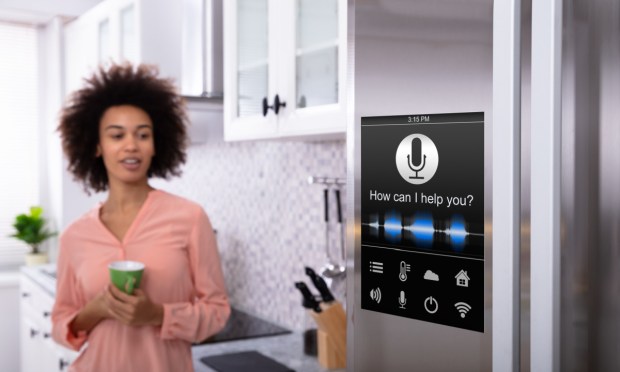As EU Decision Looms, Amazon’s iRobot Bid Spotlights Smart Home’s Evolution

There’s less than a month to go before EU antitrust regulators give a thumbs up or down on Amazon’s bid to buy iRobot Corp.
As reported in recent days by Bloomberg and other sites, the European Commission will weigh in on the deal by July 6.
No matter the outcome, Amazon’s actions spotlight the inexorable rise of the connected economy — and it’s a surge that has only gathered momentum in the 10 months since the proposed acquisition was announced last August, as an all-cash transaction valued at $1.7 billion.
PYMNTS data in the continuing ConnectedEconomy series show that as 2023 got underway, 21 million more consumers participated in activities involving some type of smart home device than in 2022 — a 31% jump. We found that the share of consumers using smart home devices in their everyday routines increased sharply in 2023. Twenty-one percent of consumers used smart security systems daily, while 15% used technology to control home conditions, up from 15% and 10%, respectively, in 2022.
Amazon, of course, has been pushing into robotics, having debuted Astro back in 2021, and that device is one that “roams” the home, monitoring the environment, with ties to Alexa and to the Ring smart security device.
Patents Pave the Way?
There are already some signs out there regarding the synthesis we might see as Amazon continues to cement its smart home presence. As reported earlier this month by the site The American Genius, the commerce giant has filed a patent request that would combine spoken commands, mobile robots, and the ability to perform a variety of tasks, from playing media to transporting objects throughout the home environs.
Delving into the patent itself, we note its approach is one that seemingly combines some of the attributes of home speakers, entertainment, home monitoring — but ranging throughout the house.
Per the filing: “The autonomously motile device may be associated with a speech-processing component configured for processing audio data, which may include a representation of an utterance of a user, to identify a command represented by the utterance and act in response to the command. The utterance may be, for example, ‘“go to the kitchen”’ — and the device itself would be primed for action via a “wakeword.” And, Amazon noted in the filing, the robot might also conceivably receive commands via a user device, such as a smartphone or tablet. The range of devices that might serve as connection points, we note, continues to grow. As spotlighted here, Amazon unveiled four new devices in its Alexa-powered Echo line of smart products — the Echo Pop, Echo Show 5, Echo Show 5 Kids and Echo Buds.
Separate PYMNTS research has detailed that 58% of consumers said they would use voice because it is easier and more convenient, while 54% would use it because it is faster than typing or using a touchscreen.
If the patent filing gives a hint of what’s to come, the old song may change a bit — where a home on the range in the 21st century refers to the Wi-Fi range, and buffaloes give way to the robots that roam.

